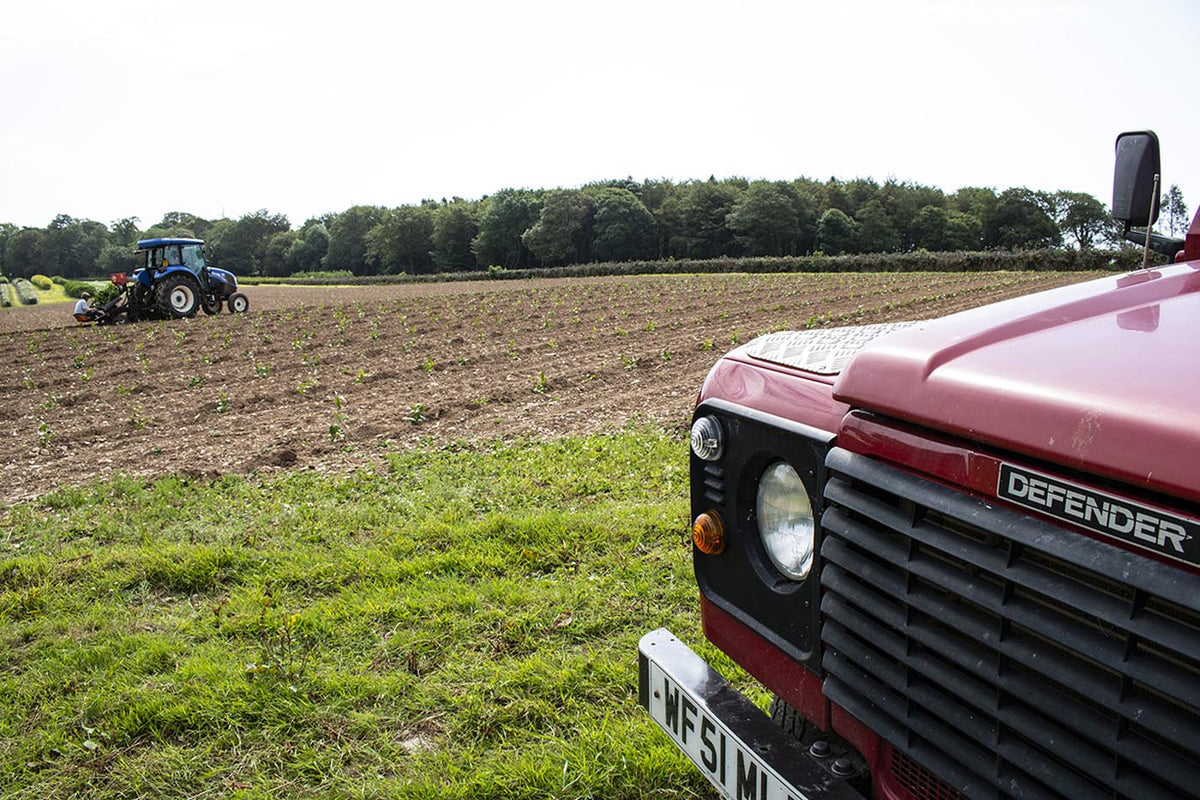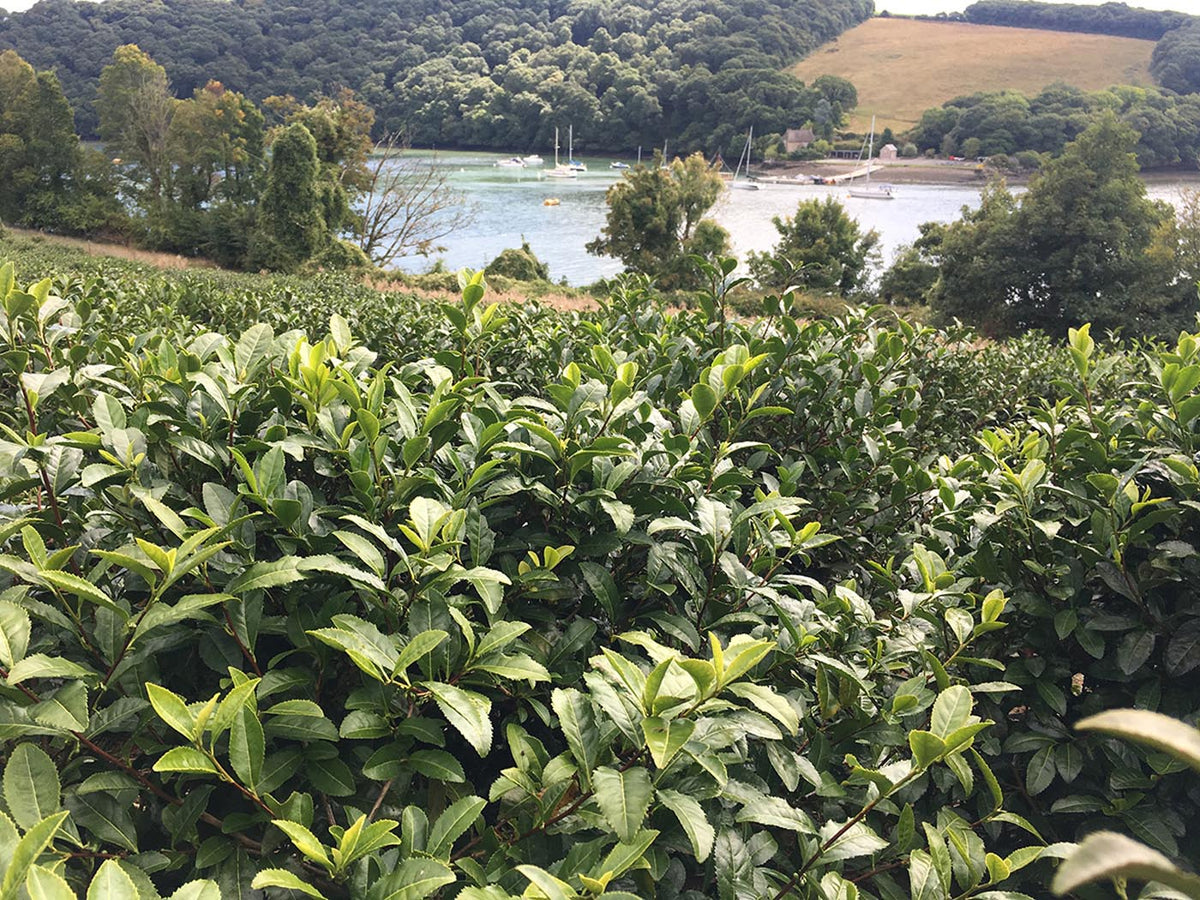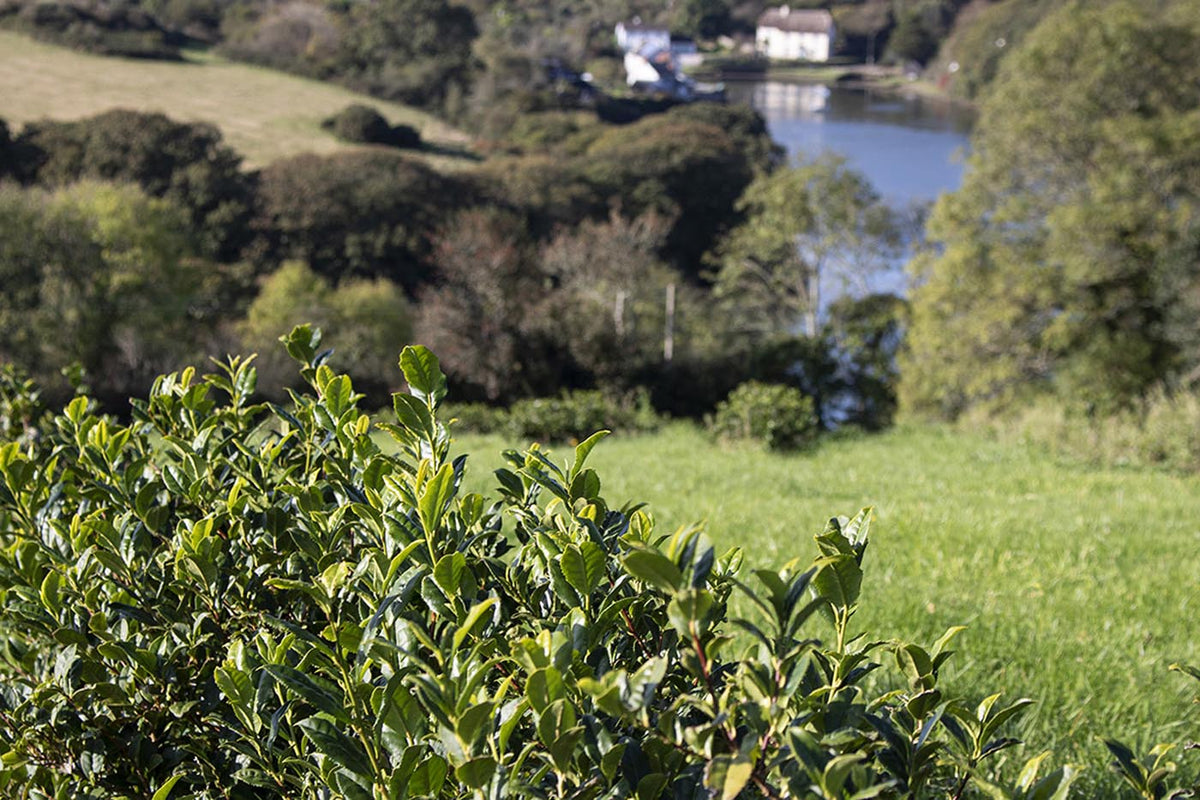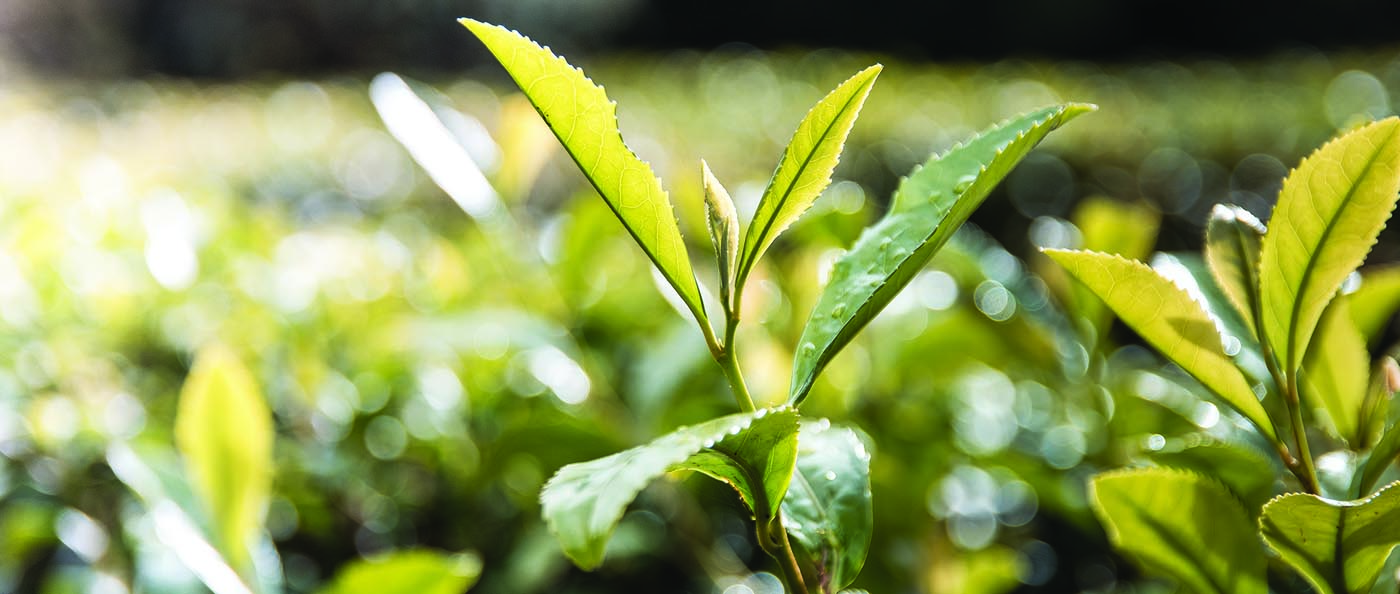Tregothnan has greatly expanded its tea production since the very first bushes were planted in 1999.
However, there is a ceiling on the suitable areas for tea planting in the UK. Tea requires a very specific set of climate conditions in order to grow, survive and thrive to the level of a productive tea garden. Having scoured the western fringe of Europe from Scotland to Morocco, researchers confirm that the optimum microclimate is centred on just 150 acres, on the banks of the river running through Tregothnan. Perfect lands for tea planting are equally hard to find in the Himalayas, with Darjeeling making up just a tiny fraction of the wider landscape. This means that although Tregothnan is very small on the world’s tea production scale (around 0.02% of the world’s tea acreage), we counter limitations of scale by producing some of the world’s rarest and highest rated teas. Last year, Tea Epicure have announced the results from a huge batch of tastings conducted in the USA, confirming that Tregothnan is ranked in the very TOP tier of tea in the world, surpassing Chinese and Indian producers who have been perfecting their techniques for thousands of years!
Find out more about the unique characteristics of the different tea areas at Tregothnan by reading more about each one below.
Kitchen Garden
On the other side of the door, the Kitchen Garden opens out and slopes towards the Fal estuary which meanders through the estate lands. Tea is the first crop you come to, tucked in beside the high brick wall that characterises a kitchen garden style for country estates. The wall was one of the main reasons why Kitchen Garden was specified as the first trial site for the first plantation – tasked with protecting the tea from prevailing winds from the north. On the other side of the tea rows is manuka – another pioneering crop that has been thriving at Tregothnan since the 1880s when it was introduced to the estate from native New Zealand. Manuka or Leptospermum scoparium is small tree like in nature and also provides shelter to the tea. Bee hives are nestled in amongst the Manuka bushes to assist the bees in production of Manuka honey and to aid pollination of tea.
We experimented with tea planting in different areas of Kitchen Garden discovering that tea thrives best at the edge of the garden nearest to the door, as it is shaded from too much direct sunlight. Contrary to popular belief, although tea needs warmth and sunshine to flush new shoots, it doesn’t like intense hot sun as this can lead to sun scorch and bitter tasting leaves. Many harsh lessons were learned from experiments in the Kitchen Garden; this knowledge is freely shared on the ever popular tea training courses.

Himalayan Valley

In the heart of the Tregothnan garden lies one of the most spectacular tea plantations in history. The Himalayan Valley is so named because many of the plants thriving there are native to the Himalayas. A beautiful Magnolia tree arches over ponds with gently flowing waterfalls, giving the impression that you could be in an oriental paradise. A Chinese pagoda is tucked into the hillside, surrounded by domed Rhododendron bushes that will bloom in hot pink throughout the spring.
The Himalayan Valley tea plantation was planted in 2013 when many visitors to the World’s Largest Open Garden Weekend for Charity at Tregothnan wanted to be able to see the tea growing for themselves. This site was chosen in the garden for the rolling hillside and the warm, fresh water provided by the ponds. The tea garden faces north westerly, so not the obvious spot for tea growing. These conditions have perfectly suited the special tea here which thrives and is regularly plucked all year round..
Many of the tea varieties sent to Tregothnan from tea growers all over the world are planted here in the Himalayan Valley. When the International media first reported Tregothnan’s quest to bring the nation’s number one drink home, samples were sent from India, Africa, Japan and many other countries. Curious to find out what species, if any, could be grown in Britain’s temperate climate, global tea growers wanted to be a part of this pioneering work at Tregothnan. Himalayan Valley is now home to Vietnamese Camellia sinensis var. Gaufrettii (also known as the six pack tea, for its likening to a well-toned abdomen!), a small leaf Chinese variety, a scalloped edge variety and Tregothnan’s own exclusive varieties, produced after years of cultivating the right teas.
In 2014 Prince Philip visited Tregothnan to explore the botanical innovation at Tregothnan and try our pioneering tea for himself. After enjoying his cup of tea, he planted his very own tea bush at the top of Himalayan Valley which thrives there today. In 2018 for Prince Harry and Meghan Markle’s wedding, leaves from Prince Philip’s tea bush were used to create a special Royal Wedding Blend to celebrate the joyful occasion.

Rectory Garden

Tucked away behind the village of St Michael Penkivel is one of the newest plantations, Rectory Garden. This super special tea garden has one of the most quintessentially British backdrops imaginable, with the Georgian built stone rectory and the St Michael Penkivel village church creating a perfect picture of the British countryside. More tea vicar?
St Michael Penkivel is the main village for Tregothnan, resided in by many of the staff from the estate. Four miles from the main road at Tresillian, the village is preserved exactly as it has always looked, like it has been frozen in time. Thanks to this and the village’s beautiful natural environment, it has been used frequently as a film set – hosting crew from feature films like About Time (2013) and Keeping Mum (2005).
Rectory Garden has flourished since it was planted, despite the unusually (for Tregothnan) cold winters of 2017 and 2018 making sure it had a difficult journey to maturity. Not only have the hardy bushes tackled tough climate conditions, but they have also faced the nibbles from neighbouring deer herds. Deer love Camellia – potentially because the caffeine from the leaves gives them a buzz, just like us, and have frequently been spotted trying to sneak into Rectory Tea Garden. Consequently, fences have been erected to try and keep them out and protect our precious tea leaves for our customers instead!
All being well, Rectory Tea Garden will be ready for harvest in two years and we will look forward to tasting the leaves from this exciting new plantation.
Barn Close

Newly planted tea fields at Barn Close added to Tregothnan’s tea acreage in 2019. After a long summer of drought, the ground was so dry and hard that it was too difficult to plant new bushes. Just when all hope of 2019 planting was lost, the rain came and softened the ground just in time to get approximately 20,000 new bushes into the soil at Barn Close.
Tea Keepers at Tregothnan use tried and tested agricultural methods to plant the bushes. At Barn Close a specially adapted tractor with a cabbage planting seat helped to make light work of the new crop, which involves one person driving the tractor at a steady pace, while another person sits on a seat attached to the back of the tractor hovering inches from the ground. Baby tea bushes can then be planted into place quickly and efficiently.
The tea at Barn Close won’t be ready for harvest for a few years, or until they reach approximately 4-5 feet in size and have a stable base to retain the strength and structure of the bush. These are called maintenance leaves which are never used for tea making, but support the new growth (called the flush) on the flat top of the bush.
Pig Meadow
Pig Meadow is a nursery tea garden. Traditionally flowers and ornamental plants were grown here to be propagated for the garden and also to create floral displays for the mansion. This still happens at Pig Meadow, but room has been made for thousands of baby tea bushes. They are protected by warmth and shelter in their early infant stages until they reach approximately 1-2 feet tall. At this stage they are strong enough to be planted outside with optimum chances of surviving the adverse weather conditions possible in the UK, especially to some of our customer locations in Scotland!
New varieties of tea species are tried and tested here. Some have flourished and now grow in neat rows, producing enough leaves for trial processing.
Pig Meadow is also home to hundreds of different varieties of ornamental Camellia and the National Collection of Camellia reticulata.

Tregothnan South Tea Centre

The International Tea Centre proposed by Tregothnan in 1999 has gained support from tea experts and drinkers across the globe. Most tea industry leaders have visited Tregothnan to express interest and support for the first tea centre of its kind, building on the unrivalled tea history of Tregothnan and the UK. Scientists continue to research the world’s number one drink supplied from dozens of varieties thriving in protected environments at Tregothnan. Understanding the chemistry and nature of tea grown in certified organic conditions has proven invaluable to the expansion of the tea gardens.
This expansion is now happening at Tregothnan Coombe, an area across the deep sea creek from the home estate at Coombe Kea near Truro. This area is surrounded by the deepest section of the Fal Estuary and therefore most protected by its warming waters. Mist frequently shrouds the tea at dawn and clears to become the ‘warmest fields in Cornwall’.
Growing tea in western Europe, including the UK, is fraught with challenges. The reality is that the ‘new Darjeeling’ is even smaller than the ‘old’ Darjeeling, both tightly constrained by geography and a true microclimate. The International tea centre is the first of its kind and is the national tea research centre for our national drink. Meanwhile, a network of venues creating the most British tea experiences with Tregothnan around the world are popping up from London to Tokyo.
Halwyn
Several new tea gardens have been created at Halwyn, just past Coombe at Tregothnan. The first, is right on the edge of the estuary with far reaching views of the river winding through Cornwall’s lush, green landscape. The King Harry ferry takes passengers across the river in the distance. Halwyn is a perfect location for tea growing. The hills roll gradually down towards the water’s edge, creating good irrigation for the rows of tea and warm, moist and acidic soil. TheCamellia sinensisbushes were planted here in 2015 and have been thriving for the last few years. Now ready to pluck, the bushes at Halwyn create one of Tregothnan’s largest and most fruitful tea growing areas. The sheer scale and beauty of this historic and unspoilt landscape is breathtaking. If you want to experience the ‘best of Darjeeling with a Panama Ship Canal passing through’ then you won’t be disappointed!


Halwyn is also home to brand new tea plantings. Higher up on the hillside overlooking the Fal, home bred new baby bushes are going into the ground this spring to create another large tea garden. However, the higher up the tea is planted, the more exposed to prevailing winds. Tea keepers at Tregothnan are planting special wind breaks using plants used to high winds. These will grow to form a level of protection for the tea and allow the baby bushes to flourish. Strong roots will hopefully help to keep tea bushes thriving in the ground for more than 400 years to come.
Big, Little and Middle Vounder
Big, Little and Middle Vounder are all new tea areas which will help create the full 150 acres of British tea gardens. These new areas will form the hub of Tregothnan’s International Tea Centre. Planting is in its early stages at Big, Little and Middle Vounder. Lots of soil testing has taken place to prepare the ground for production. Tea is an excellent crop for promoting good ground microbiology, as theCamellia sinensis, once planted, can create deep root systems which improves the microbiology of the soil for habitats and the soil stability to prevent erosion. Ploughing does not happen again for hundreds of years. The same tea bushes, well maintained, can live and thrive in the same place happily for its whole lifetime. New permaculture plans and agroforestry techniques are being tailored specifically for the extraordinary situation and climatic advantages of the location.

